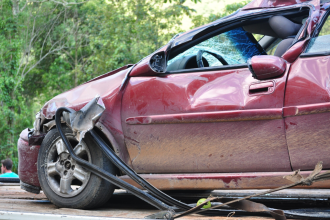When you drive on the highway, you’re sharing the road with countless other motorists, turning driving into a matter of arriving safely at your destination. With the number of vehicles on the road continuing to increase, driving safety is imperative in reducing the likelihood of accidents and injuries. The good news is you don’t have to drive uptight to be safe; small things like checking mirrors or avoiding distractions can make a difference in safe driving. Whether you’re a seasoned driver or just got your license, there are simple ways to improve your driving safety and make the road safer for yourself and others.
Eliminate Distractions
Distracted driving ranks among the top causes of accidents, not just in the US but globally. According to car accident attorneys in Moore, accidents involving distracted drivers are among the most common cases they handle, along with incidents of drunk and reckless driving. While some car accidents caused by distracted driving may be minor and get settled easily, others can be devastating and cause serious injuries, necessitating legal intervention in personal injury claims. Such scenarios can be avoided if drivers are focused on the road during the drive’s duration. Sadly, drivers text, talk on the phone, eat, adjust the GPS, or do things that momentarily take their eyes off the road, which reduces reaction time and leads to accidents. Simple solutions to this driving mistake include setting the destination in the GPS before the drive, putting the phone on “Do Not Disturb” mode, and pulling over safely if there’s an urgent need to receive a call or do other things other than driving. The bottom line is not to multitask while on the road and focus solely on driving.
Always Wear Your Seatbelt
That simple act of fastening your seatbelt takes less than five seconds to complete, but some drivers are inconvenienced by it and drive without wearing one. Others reason out that a short drive doesn’t warrant wearing a seatbelt. Whatever the distance you’re driving, wearing a seatbelt is indispensable and life-saving. Statistics show that wearing a seatbelt reduces serious injury and fatality risk in an accident by up to 50%. Looking at the numbers optimistically, that means you have a higher chance of surviving, recovering, and living through an accident with a seatbelt on. The safety solution is a no-brainer, but implement safe driving for everybody in the vehicle and ensure that all passengers, especially kids, are properly secured in seatbelts.
Maintain a Safe Following Distance
Never practice tailgating, whatever the situation on the road is – whether it’s a clear road or there’s congested traffic. Closing your distance with the vehicle in front of you reduces your reaction time and increases the risk of rear-ending the vehicle in front. The safe driving rule of thumb here is to follow the “three-second rule”, which is staying at least three seconds behind the car ahead of you. A simple way to do it is to find a stationary object ahead, like a signpost, and count three seconds after the car in front passes the object. Then, check if your vehicle passes that object next on or after the 3-second count. The distance created is your safe following distance, which gives you ample time to react and brake, decelerate, or overtake properly. Be mindful of the road conditions, as you may need to increase this distance in bad weather, low visibility, or heavy traffic.
Follow the Speed Limit
Closely related to safe following distance is driving within the speed limit. Don’t brush these limits off as mere numbers on the road. They are there for a purpose – to keep everyone on the road safe. Drive too fast, and your reaction time dips, increasing the likelihood and severity of accidents. Drive too slow, and you disrupt the flow of traffic and risk being at the receiving end of a collision. The only safe driving solution is to stick to the posted speed limits and adjust your speed depending on road conditions, traffic, and visibility. You’ll find that you’re not just safe on the road but also avoid having brushes with the law.
Avoid Driving Under Stress or Fatigue
Driving while tired or emotionally charged can cloud your judgment and impair your reaction time. Don’t tempt fate by continuing to drive under these conditions; waiting until your mental acuity is restored or someone else does the driving is better. Being emotionally stable is also vital if you’re behind the wheel, as you’re more likely to be reactive, confrontational, and prone to outbursts over minor issues. The safe driving solution? Be well-rested or calm yourself down first before taking the wheel.

Driving safety is not only about being on the defensive on the road but also about taking preventive measures to avoid being the cause of accidents. The good thing about adopting this practice is that it does not require a total lifestyle overhaul. Simple things like staying alert, having a safety mindset, and practicing patience behind the wheel reduce your risks on the road. So, drive safely and don’t be a hazard to yourself and everyone on the road.














